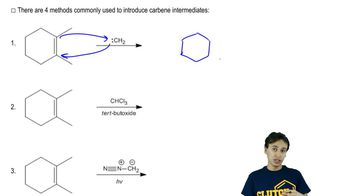Suggest an arrow-pushing mechanism for each of the following acid–base reactions.
(d) [an intramolecular reaction]
 Verified step by step guidance
Verified step by step guidance Verified video answer for a similar problem:
Verified video answer for a similar problem:



 2:49m
2:49mMaster The Lewis definition of acids and bases. with a bite sized video explanation from Johnny
Start learning